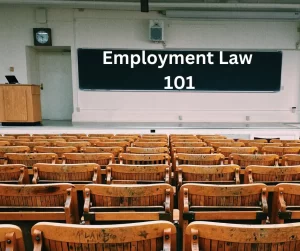
Under Washington State Superior Court Civil Rules (hereinafter, “CR”), what is the CR 26(i) conference requirement? Here’s my point of view.
IMPORTANT: All hyperlinks in this article with an asterisk (*) will take the reader away from this website to either our Williams Law Group Blog* or an official governmental website. This article is for informational purposes only and is based upon my point of view. Due to the rapidly changing nature of the law, we make no warranty or guarantee concerning the accuracy or reliability of the content in this article. No content on this site, regardless of date, should ever be used as a substitute for direct legal advice from your attorney. Please review our Disclaimer|Terms of Use|Privacy Policy before proceeding.
The CR 26(i) Conference Requirement (WA State)
In civil litigation in Washington State, adherence to procedural rules is paramount for the smooth functioning of the legal system and ensuring fairness for all parties involved. One such rule that holds significant importance concerning the discovery process is CR 26(i)*. In this article, I delve into what this rule entails and why it’s crucial for civil attorneys practicing in Washington State to understand and comply with it.
Understanding CR 26(i)
Requirement for Conference of Counsel
CR 26(i)* mandates that before presenting any motion or objection concerning Rules 26 through 37 (Depositions and Discovery) of the Washington State Rules of Superior Court*, counsel for the parties involved must confer with each other. This conference should be arranged at a mutually convenient time and can take place either in person or via telephone.
Good Faith Conferencing
The rule emphasizes the necessity of conducting the conference in good faith. This implies that the parties involved should engage in meaningful discussions aimed at resolving issues or reaching agreements regarding the motion or objection at hand.
Sanctions for Non-Compliance
Should the court determine that counsel for any party has willfully refused or failed to confer in good faith as required by CR 26(i)*, it holds the authority to apply sanctions as outlined under Rule 37(b)*. These sanctions can encompass a range of punitive measures, highlighting the seriousness with which the court views non-compliance with procedural requirements.
Certification Requirement
Importantly, any motion seeking an order to compel discovery or obtain protection must include certification from counsel affirming that the conference requirements of CR 26(i)* have been met. This certification serves as evidence of compliance and ensures transparency in the litigation process.
Importance of Compliance
Compliance with CR 26(i)* is not merely a procedural formality; it serves several crucial purposes:
1. Facilitating Communication
By necessitating conference among counsel, the rule promotes open communication and collaboration between parties. This can often lead to the resolution of disputes without the need for court intervention, thereby saving time and resources.
2. Efficient Case Management
Ensuring that parties engage in pre-motion conferences helps streamline the litigation process. By addressing potential issues early on, the court can better manage its docket and expedite proceedings.
3. Promoting Fairness
The requirement for good-faith conferencing underscores the principle of fairness in litigation. It encourages parties to engage in constructive dialogue and seek mutually acceptable solutions, ultimately promoting equitable outcomes.
4. Enhancing Accountability
The certification requirement adds an extra layer of accountability for counsel, reinforcing the importance of compliance with procedural rules. It acts as a safeguard against frivolous or improper motions, thereby promoting the integrity of the legal process.
Conclusion
In civil litigation in Washington State, adherence to procedural rules like CR 26(i) is indispensable. By mandating pre-motion conferences and ensuring good faith engagement among counsel, this rule serves to foster communication, streamline proceedings, and uphold the principles of fairness and accountability within the legal system. Attorneys practicing in Washington State must familiarize themselves with CR 26(i) and diligently adhere to its requirements to navigate civil litigation successfully. Failure to do so can not only result in sanctions but may also undermine the integrity of the litigation process itself.
LEARN MORE
If you would like to learn more, then consider contacting an experienced attorney to discuss your case. This article is not offered as legal advice and will not establish an attorney-client relationship with Law Office of Gregory A. Williams, or the author of this article; please refer to our Disclaimer | Terms of Use | Privacy Policy for more information.









